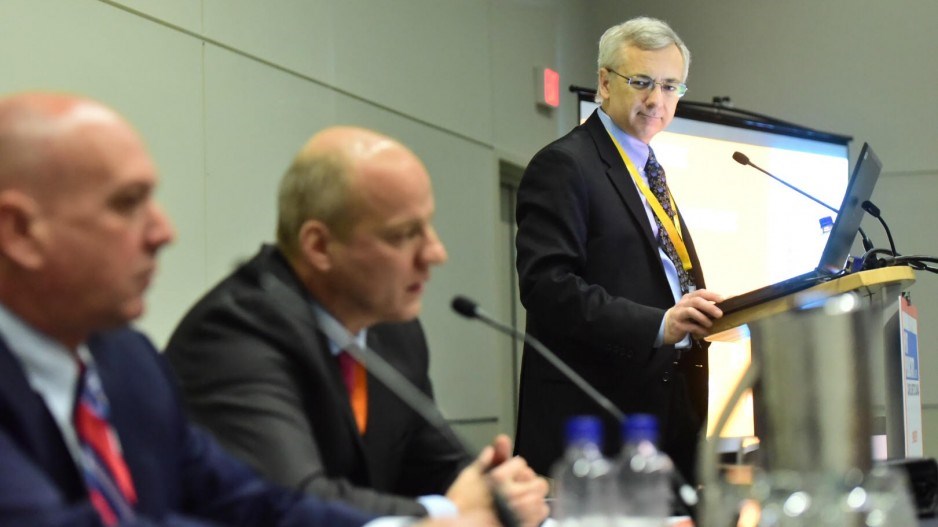With global trade at its lowest ebb since 2011, key figures within the shipping industry are looking to make sense of the cloud of unknowns and instability that has descended on the sector.
Speakers at the ocean shipping outlook panel on February 8 – part of the Cargo Logistics Canada Expo and Conference – acknowledged global trade in 2017 could make small gains on last year’s numbers, but said the industry is still reeling from losing one of its key players.
In late August, Hanjin Shipping Co. filed for court receivership after it failed to regain its footing from the 2008-09 economic recession. It is scheduled to be declared bankrupt on February 17. The Journal of Commerce estimates the container shipping industry lost US$1.5 billion as a result of the financial crisis, and Hanjin alone lost US$1.1 billion in 2009. The South Korean company was the world’s seventh-largest container shipping line. Its filing for receivership triggered a scramble by shippers to find alternative containers after the company failed to raise enough liquidity and restructure its debt. An estimated US$14 billion in cargo on more than 80 ships was initially set adrift in financial uncertainty as terminals refuse to load or unload Hanjin vessels without assurance of payment for services or those ships remain at sea fearing seizure by creditors.
Panellist David Bennett, president of the Americas for Globe Express, a supply chain company that owns air and ocean freight services, said the fall of Hanjin looms large over the industry.
“What’s the true long-term and short-term impact of the Hanjin bankruptcy? As a result of that I think we have gone through a very unsustainable and volatile rate environment. … I think this creates a very interesting challenge for the industry and the shippers.”
Paul Bingham, vice-president of trade and global logistics for the Economic Development Research Group, said the consensus forecast for world gross domestic product growth is at 3.4% for 2017. This would push world GDP growth above 2011 figures, but nowhere near pre-recession levels.
“Now if you’re a developing economy, that’s pretty strong growth, but if you’re not a developing economy, that’s not so great,” Bingham said. “There’s a rule of thumb that if you have world economic growth fall below 2%, you’re actually in a recession.”
World GDP growth ended 2016 at 2.6% according to the World Bank. Bingham said there could be a light at the end of the tunnel.
“We kind of went through this commodity price supercycle where commodity prices dropped for years,” he said. “And we’re past the bottom of that cycle; we’ve seen a number of commodity prices moving up including oil.”
Bingham added there still remains overcapacity in multiple commodity sectors including oil and gas, which has caused a number of emerging nations who rely on exports for growth to bottom out.
Germany-based cargo container shipping line Hapag-Lloyd (ETR:HLAG) recently announced it is merging with United Arab Shipping Co., which would create the fifth-largest ocean container carrier company in the world.
Wolfgang Schoch, vice-president of Hapag-Lloyd Canada, said he expects the merger to be official by March. Hapag-Lloyd has 166 ships, and United Arab Shipping has 52. He noted his outlook for the global shipping industry has improved recently despite recent setbacks and low growth projections.
“For me, I see the light at the end of the tunnel, and for me that’s a lot better than the past few years.”




